48 Hours in These Cities Will Change How You See the World
Weekend city breaks have revolutionized how we experience travel. In our fast-paced world, carving out time for a full week-long vacation isn’t always realistic, but dedicating 48 hours to urban exploration? That’s achievable magic.
The beauty of short city breaks lies in their intensity. When you know your time is limited, every moment becomes precious. You’ll find yourself more present, more observant, and surprisingly more open to experiences you might otherwise skip. This concentrated approach to travel often delivers more memorable moments per hour than longer trips where days can blur together.
Two day city itineraries force you to prioritize. Instead of trying to see everything, you focus on what truly matters – the experiences that capture a city’s essence. This selective approach often leads to deeper connections with places and people, transforming brief visits into lasting memories.
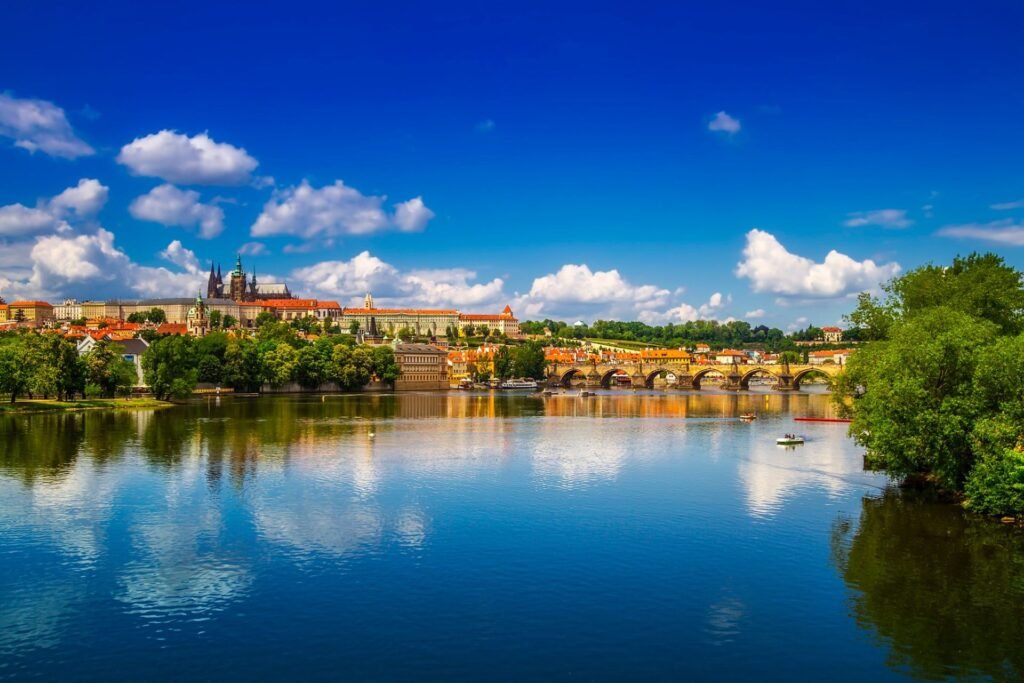
Prague: Medieval Magic Meets Modern Charm
Prague stands as one of Europe’s most enchanting weekend getaway cities, where centuries of history unfold around every cobblestone corner. The Czech capital offers an intoxicating blend of Gothic spires, baroque palaces, and a vibrant contemporary culture that makes every hour count.
Start your 48 hour city guide in Prague’s Old Town Square, where the astronomical clock has been marking time since 1410. Arrive early to beat the crowds and watch the hourly show when medieval figures emerge from the clock’s chambers. The surrounding buildings tell stories of merchant wealth and royal power, each facade a chapter in Prague’s rich narrative.
Cross the iconic Charles Bridge at dawn when morning mist rises from the Vltava River. The 14th-century stone bridge, lined with baroque statues, offers unparalleled views of Prague Castle perched majestically on the hill. Street musicians and artists add contemporary life to this ancient crossing, creating perfect moments for reflection and photography.
Dedicate your afternoon to Prague Castle, one of the largest ancient castle complexes in the world. The Gothic St. Vitus Cathedral, the Old Royal Palace, and the charming Golden Lane each deserve attention, but don’t miss the castle gardens where locals escape tourist crowds.
As evening approaches, venture into the Vinohrady district. This residential area showcases Prague’s modern soul through trendy restaurants, craft beer halls, and art nouveau architecture. Sample traditional Czech cuisine paired with world-renowned Pilsner beer – the combination will redefine your understanding of comfort food.
Your second day should explore Prague’s artistic renaissance. Visit the DOX Centre for Contemporary Art or the Kampa Museum to understand how Prague’s creative community is shaping the city’s future. End your metropolitan escape with drinks at a rooftop bar overlooking the illuminated cityscape, where medieval towers pierce the night sky like frozen fireworks.

Barcelona: Architecture and Atmosphere
Barcelona transforms visitors within hours through its unique blend of Catalan culture, architectural wonders, and Mediterranean lifestyle. This Spanish city proves that weekend city breaks can be both culturally enriching and utterly relaxing.
Begin your quick city trip at Park Güell, Antoni Gaudí’s whimsical masterpiece. The colorful mosaics and organic curves seem to grow from the earth itself, offering a completely different perspective on urban design. Arrive early to secure entry tickets and enjoy panoramic views across Barcelona before the crowds arrive.
The Sagrada Família demands several hours of your precious 48-hour window. Gaudí’s unfinished cathedral challenges every preconception about religious architecture. The forest-like interior columns and kaleidoscope windows create an otherworldly atmosphere that photography cannot capture. Book tickets in advance and consider the audio guide to fully appreciate the genius behind this ongoing construction project.
Barcelona’s Gothic Quarter tells the city’s oldest stories through narrow medieval streets and hidden squares. Plaza del Rey and Plaza Sant Felip Neri offer peaceful respites where you can absorb the weight of centuries. The cathedral here showcases traditional Gothic architecture, providing perfect contrast to Gaudí’s revolutionary vision.
No Barcelona itinerary is complete without embracing the Spanish tradition of late dining. Find a family-run tapas bar in the El Born district where locals gather after 9 PM. Order small plates designed for sharing – patatas bravas, jamón ibérico, manchego cheese – paired with rioja wine or local cava. This unhurried approach to dining reflects Barcelona’s philosophy that meals are social experiences, not mere fuel stops.
Dedicate your second morning to La Boquería market on Las Ramblas. This sensory explosion of fresh produce, seafood, and prepared foods showcases Catalonia’s culinary traditions. Sample exotic fruits, watch skilled vendors craft fresh juices, and understand why Barcelona’s food scene rivals any global city.
End your metropolitan adventure at Barceloneta Beach, where the Mediterranean meets urban sophistication. Even in cooler months, the seaside promenade offers perspective on how Barcelona balances metropolitan energy with coastal relaxation.
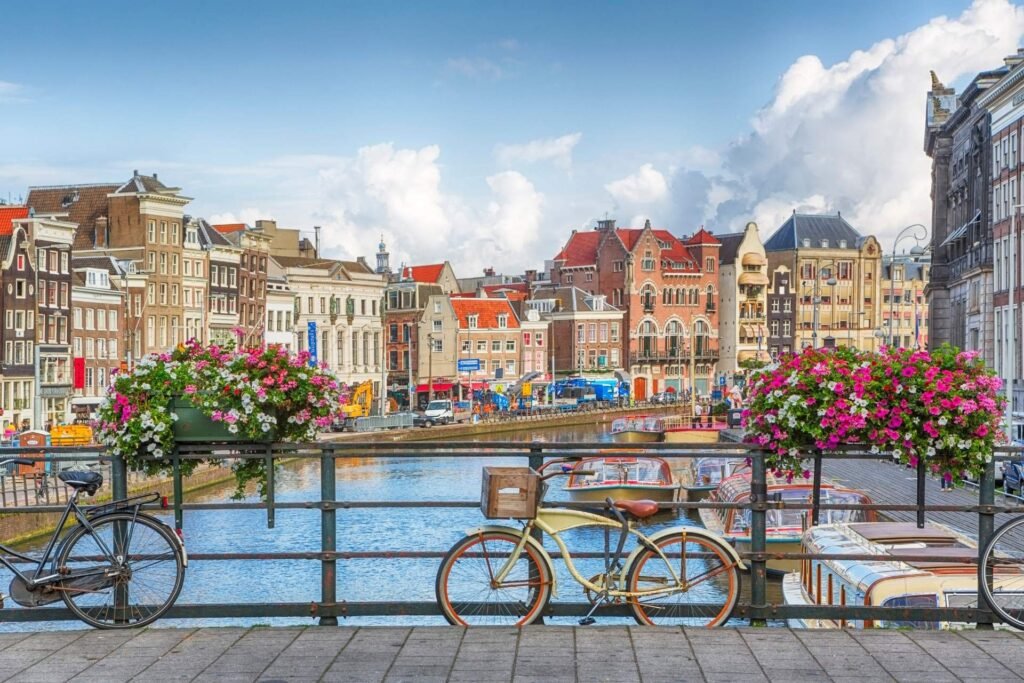
Amsterdam: Canals, Culture, and Character
Amsterdam’s network of UNESCO-listed canals creates one of Europe’s most distinctive urban landscapes, making it perfect for transformative short city breaks. The Dutch capital’s compact size means you can experience multiple facets of its character within your limited timeframe.
Start your two day city itinerary with a canal cruise during golden hour. The 17th-century merchant houses lining the waterways tell stories of Amsterdam’s Golden Age when Dutch trading ships dominated global commerce. Each gabled facade represents different architectural periods and wealth levels, creating a timeline you can read from the water.
The Anne Frank House requires advance booking but offers profound insights into Amsterdam’s wartime experience. The preserved hiding place where Anne wrote her famous diary provides context for understanding how ordinary people faced extraordinary circumstances. Allow extra time for reflection after this emotionally charged visit.
Amsterdam’s museum quarter houses world-class collections within walking distance. The Rijksmuseum showcases Dutch masters including Rembrandt and Vermeer, while the Van Gogh Museum traces the tortured artist’s evolution. If time permits, the Stedelijk Museum presents contemporary works that demonstrate Amsterdam’s ongoing cultural relevance.
The Jordaan district epitomizes Amsterdam’s residential charm. Former working-class neighborhoods now host boutique shops, cozy cafés, and art galleries. Saturday’s Noordermarkt offers vintage finds and organic produce, while the surrounding streets showcase how Amsterdam residents actually live beyond tourist areas.
Experience Amsterdam’s famous café culture, but understand the distinction between “cafés” (coffee shops) and “brown cafés” (traditional pubs). The latter, with their dark wood interiors and centuries of stories embedded in tobacco-stained walls, offer authentic glimpses into Dutch social traditions.
Your second day should include Vondelpark, Amsterdam’s green lung where locals jog, picnic, and perform impromptu concerts. The park’s English landscape design provides peaceful contrast to the city’s geometric canal structure.
End your weekend getaway with dinner in a traditional Dutch restaurant. Stamppot (mashed potatoes with vegetables) and erwtensoep (split pea soup) might seem simple, but they represent comfort food perfected over generations.
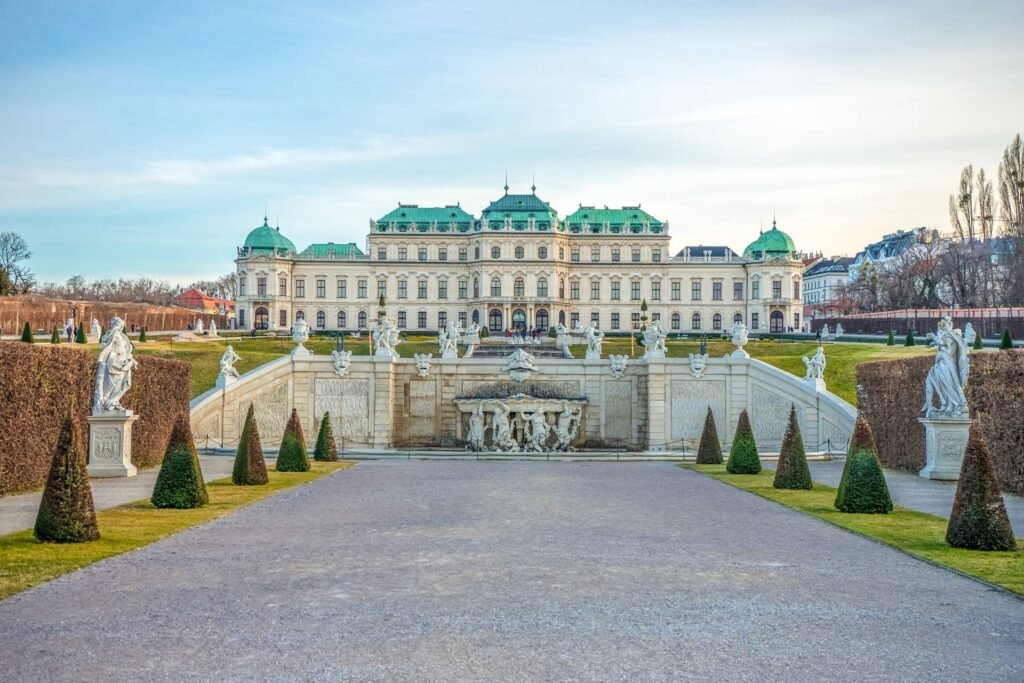
Vienna: Imperial Grandeur in a Weekend
Vienna transforms weekend visitors through its imperial legacy and contemporary cultural renaissance. The Austrian capital demonstrates how cities can honor their past while embracing modernity, creating urban experiences that feel both timeless and immediate.
Begin your 48 hour city guide at Schönbrunn Palace, the Habsburgs’ summer residence that rivals Versailles in grandeur. The palace rooms showcase imperial lifestyle at its peak, while the gardens demonstrate baroque landscape design principles. Climb to the Gloriette for panoramic views across Vienna’s rooftops toward the Danube.
Vienna’s historic center, another UNESCO World Heritage site, deserves careful exploration. St. Stephen’s Cathedral anchors the old city with its distinctive tile roof and Gothic spires. The surrounding streets contain hidden courtyards, traditional coffee houses, and shops that have served Viennese families for generations.
No Vienna itinerary would be complete without experiencing traditional coffee house culture. Café Central or Café Demel offer authentic atmospheres where intellectuals once debated philosophy over sachertorte and melange coffee. This isn’t about quick caffeine fixes – Viennese coffee culture encourages lingering, reading newspapers, and observing daily life unfold.
The Belvedere Palace houses Gustav Klimt’s golden masterpieces including “The Kiss.” The baroque palace itself merits attention, but Klimt’s sensual, decorative paintings capture Vienna’s artistic soul during its creative peak around 1900.
Evening in Vienna means classical music. The Vienna State Opera offers world-class performances, but smaller venues like Musikverein provide more intimate settings for experiencing the city’s musical heritage. Even if opera isn’t your preference, the architecture and atmosphere of these venues illuminate Vienna’s cultural priorities.
Your second day should explore Vienna’s contemporary side. The MuseumsQuartier combines historic architecture with cutting-edge exhibitions, while the Naschmarkt showcases Vienna’s evolving food scene through international vendors alongside traditional Austrian products.
Walk along the Danube Canal where street art and trendy bars demonstrate how Vienna’s younger generation is redefining the city’s identity while respecting its foundations.
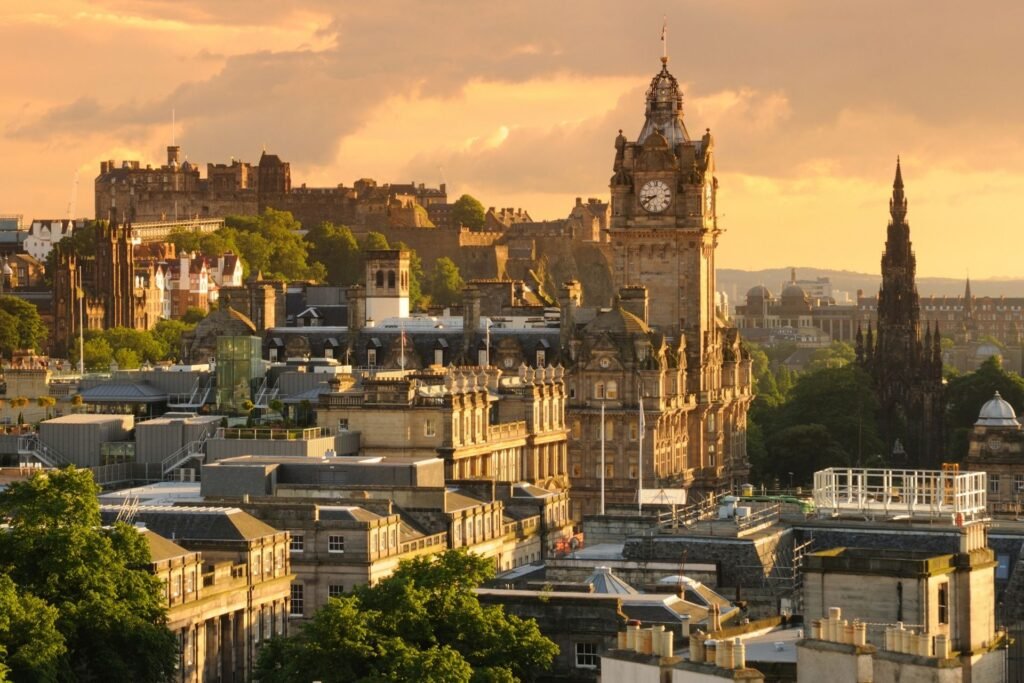
Edinburgh: Scottish Soul in Every Stone
Edinburgh’s dramatic setting between ancient volcanic hills and the North Sea creates one of Europe’s most theatrical urban experiences. Scotland’s capital proves that weekend city breaks can deliver both natural beauty and cultural depth within the same compact timeframe.
Edinburgh Castle dominates the city’s skyline from its volcanic rock perch, visible from virtually every street corner. The fortress has witnessed over 1,000 years of Scottish history, from medieval sieges to royal ceremonies. The Crown Jewels and Stone of Destiny represent Scottish national identity, while the castle’s military museums explain Scotland’s role in British and world history.
The Royal Mile connects Edinburgh Castle to Holyrood Palace through the city’s medieval heart. This ancient street features closes (narrow alleys) leading to hidden courtyards where ordinary Edinburgh residents lived and worked for centuries. St. Giles’ Cathedral, Scotland’s High Kirk, anchors the street with its distinctive crown spire.
Edinburgh’s literary heritage runs deeper than most cities realize. The Writers’ Museum celebrates Robert Louis Stevenson, Sir Walter Scott, and Robert Burns, while J.K. Rowling wrote early Harry Potter chapters in local cafés. Book lovers should explore the second-hand bookshops along the Grassmarket, where literary treasures hide among the tourist shops.
Arthur’s Seat, Edinburgh’s highest peak, requires a moderate hike but rewards climbers with 360-degree views across the city, the Pentland Hills, and the Firth of Forth. This extinct volcano provides perspective on Edinburgh’s unique geography and explains why the city developed its distinctive character.
The evening calls for experiencing Scottish hospitality in a traditional pub. The Deacon’s House Café or The World’s End offer authentic atmospheres where locals gather over pints of Scottish ale and hearty meals featuring haggis, neeps, and tatties.
Your second day should explore Edinburgh’s New Town, a Georgian urban planning masterpiece built in the 18th century. Princes Street and George Street demonstrate how thoughtful city design can create harmony between commerce, residence, and public space.
End your metropolitan escape with a whisky tasting. Scotland’s national drink comes in countless varieties, each reflecting different regions and production methods. Local experts can guide you through single malts that capture Scotland’s landscape in liquid form.
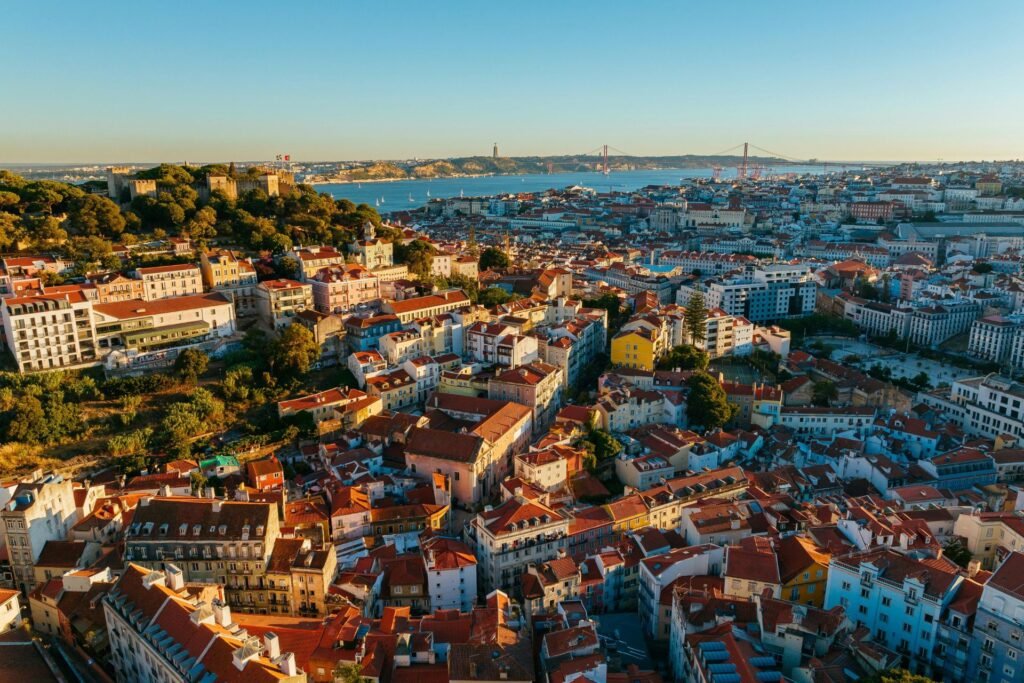
Lisbon: Hills, History, and Heart
Lisbon’s seven hills create a city of constantly changing perspectives, where narrow cobblestone streets suddenly open onto spectacular viewpoints overlooking the Tagus River. Portugal’s capital offers one of Europe’s most authentic urban experiences, largely because mass tourism hasn’t yet transformed its essential character.
Begin your quick city trip in the Alfama district, Lisbon’s oldest neighborhood that survived the devastating 1755 earthquake. The maze-like streets follow medieval patterns, leading to viewpoints called miradouros where you can orient yourself geographically and historically. The neighborhood comes alive in the evening when fado music drifts from traditional restaurants.
Tram 28 provides an affordable city tour that hits major landmarks while showcasing Lisbon’s steep topography. The vintage yellow trams rattle through narrow streets barely wide enough for cars, offering glimpses into residential neighborhoods tourists rarely see. Board early to secure seats and enjoy the full circuit.
The Jerónimos Monastery in Belém represents Portugal’s Age of Discovery when Portuguese explorers like Vasco da Gama opened sea routes to Asia and South America. The Manueline architecture, unique to Portugal, incorporates maritime motifs that celebrate the country’s seafaring heritage. Nearby, the Belém Tower served as a lighthouse and defensive fortress guarding Lisbon’s harbor.
Lisbon’s food scene deserves serious attention during your 48-hour window. Portuguese cuisine extends far beyond cod fish and port wine. Sample pastéis de nata (custard tarts) at Pastéis de Belém, where the original recipe remains a closely guarded secret. Fresh seafood restaurants along the waterfront serve grilled sardines, seafood rice, and caldeirada (fish stew) that showcase Portugal’s Atlantic abundance.
The LX Factory, housed in converted industrial buildings, represents Lisbon’s creative renaissance. This cultural hub features art galleries, design shops, restaurants, and co-working spaces where young Portuguese entrepreneurs are building the city’s future. The contrast between traditional neighborhoods and contemporary creative spaces illustrates how Lisbon is evolving while maintaining its authenticity.
Your second day should include a ferry ride across the Tagus to Cacilhas for panoramic views back toward Lisbon’s hillside neighborhoods. The perspective from the water reveals how geography shaped the city’s development and explains Portuguese maritime culture.
End your weekend getaway in a traditional tasca (tavern) where locals gather for late dinners accompanied by Portuguese wine. The unhurried pace and genuine warmth of Portuguese hospitality will leave lasting impressions long after your return home.
How to Maximize Your 48-Hour City Adventure
Successful weekend city breaks require strategic planning balanced with spontaneous discovery. The key lies in creating flexible frameworks that allow for both must-see attractions and unexpected encounters that often become the most memorable parts of any urban exploration.
Pre-Trip Research Pays Dividends Spend time before departure understanding your chosen city’s geography, transportation systems, and cultural rhythms. Download offline maps, research opening hours for key attractions, and identify neighborhoods that align with your interests. This preparation allows you to make informed decisions quickly when you’re actually exploring.
Master Local Transportation Every great city has efficient public transportation that locals use daily. Purchase transit passes that cover your entire stay – the convenience and cost savings justify the investment. Learn basic route patterns and don’t hesitate to ask locals for directions; most residents appreciate visitors who attempt to navigate like locals rather than relying solely on tourist buses.
Timing Makes Everything Better Popular attractions often have optimal visiting times that savvy travelers learn to exploit. Museums might offer reduced crowds during lunch hours, while famous viewpoints provide better lighting and fewer people at sunrise or sunset. Churches and religious sites usually maintain quiet morning hours perfect for reflection and photography.
Mix Planned Activities with Wandering Schedule your highest-priority experiences but leave substantial time blocks for unplanned exploration. Some of travel’s most rewarding moments occur when you follow interesting streets without specific destinations, discover neighborhood markets, or strike up conversations with locals who offer insider perspectives.
Document Thoughtfully Rather than photographing everything, focus on capturing moments that genuinely moved you. Write brief notes about conversations, meals, or observations that surprised you. These personal records often prove more valuable than hundreds of generic tourist photos.
Planning Your Perfect Weekend Getaway
Choosing Your Destination Consider factors beyond simple attraction lists when selecting weekend getaway cities. Flight or train connections from your location, visa requirements, currency considerations, and seasonal weather all impact your 48-hour experience. Cities within 3-4 hours of travel time maximize your actual exploration time.
Accommodation Strategy Location trumps luxury for short city breaks. Central accommodations might cost more but save precious time and transportation costs. Consider neighborhoods slightly outside tourist centers where you’ll experience more authentic local life while maintaining easy access to major attractions.
Packing for Urban Adventures Pack light but strategically for metropolitan escapes. Comfortable walking shoes are essential, as city exploration involves far more walking than most people anticipate. Layer clothing to adapt to changing weather and indoor/outdoor temperature variations. A small daypack leaves hands free for maps, cameras, and spontaneous purchases.
Money and Practicalities Notify banks about travel plans to avoid card blocks. Research tipping customs and typical price ranges for meals, transportation, and attractions. Many European cities favor contactless payments, so ensure your cards have appropriate technology. Download currency conversion apps for quick price comparisons.
Making Connections Weekend city breaks offer limited time for deep cultural immersion, but small efforts to connect with locals can dramatically enhance your experience. Learn basic greetings in the local language, show interest in local customs, and frequent establishments where residents actually spend time rather than tourist-focused venues.
Frequently Asked Questions
Q: How far in advance should I book weekend city breaks? A: Book flights and accommodations 6-8 weeks ahead for better prices and availability. However, some cities offer last-minute deals, especially during off-peak seasons. Museum tickets and restaurant reservations can often be made 1-2 weeks prior.
Q: What’s the ideal budget for a 48-hour city trip? A: Budget varies significantly by destination, but expect €200-400 per person for accommodation, meals, transportation, and attractions in most European cities. Eastern European destinations typically cost less, while Scandinavian cities require higher budgets.
Q: Should I use guided tours or explore independently? A: Independent exploration offers more flexibility for short trips, but consider brief walking tours on your first day to orient yourself geographically and culturally. Food tours can be particularly valuable for discovering local specialties efficiently.
Q: How do I handle language barriers during quick visits? A: Download translation apps before traveling, but don’t let language concerns limit your adventures. Most tourist areas in major cities accommodate English speakers, and locals often appreciate visitors who attempt basic pleasantries in their language.
Q: What if weather ruins my outdoor plans? A: Research indoor alternatives before departure. Most cities offer excellent museums, shopping districts, historic buildings, or cultural venues that provide rich experiences regardless of weather conditions.
Key Takeaways Summary
Weekend city breaks represent modern travel at its most efficient and transformative. These concentrated urban experiences force prioritization that often leads to deeper engagement with places and cultures than longer trips where days blur together.
The cities highlighted here – Prague, Barcelona, Amsterdam, Vienna, Edinburgh, and Lisbon – each offer unique perspectives on European culture, history, and contemporary life. Their compact sizes, efficient transportation systems, and concentrated attractions make them ideal for two day city itineraries.
Success in short city breaks comes from balancing planned experiences with spontaneous discovery. Research and preparation enhance your options, but remain open to unexpected encounters that often become your most treasured memories.
The transformative power of 48-hour urban adventures lies not in checking attractions off lists, but in allowing cities to surprise you with their complexity, beauty, and human connections. These weekend getaway cities prove that meaningful travel experiences don’t require weeks of vacation time – sometimes the most powerful journeys happen in the space of a single weekend.
If you liked this article, check the other ones on Majestic Mondo website. Consider joining the Instagram community as well, to fully enjoy the beauty of our planet.

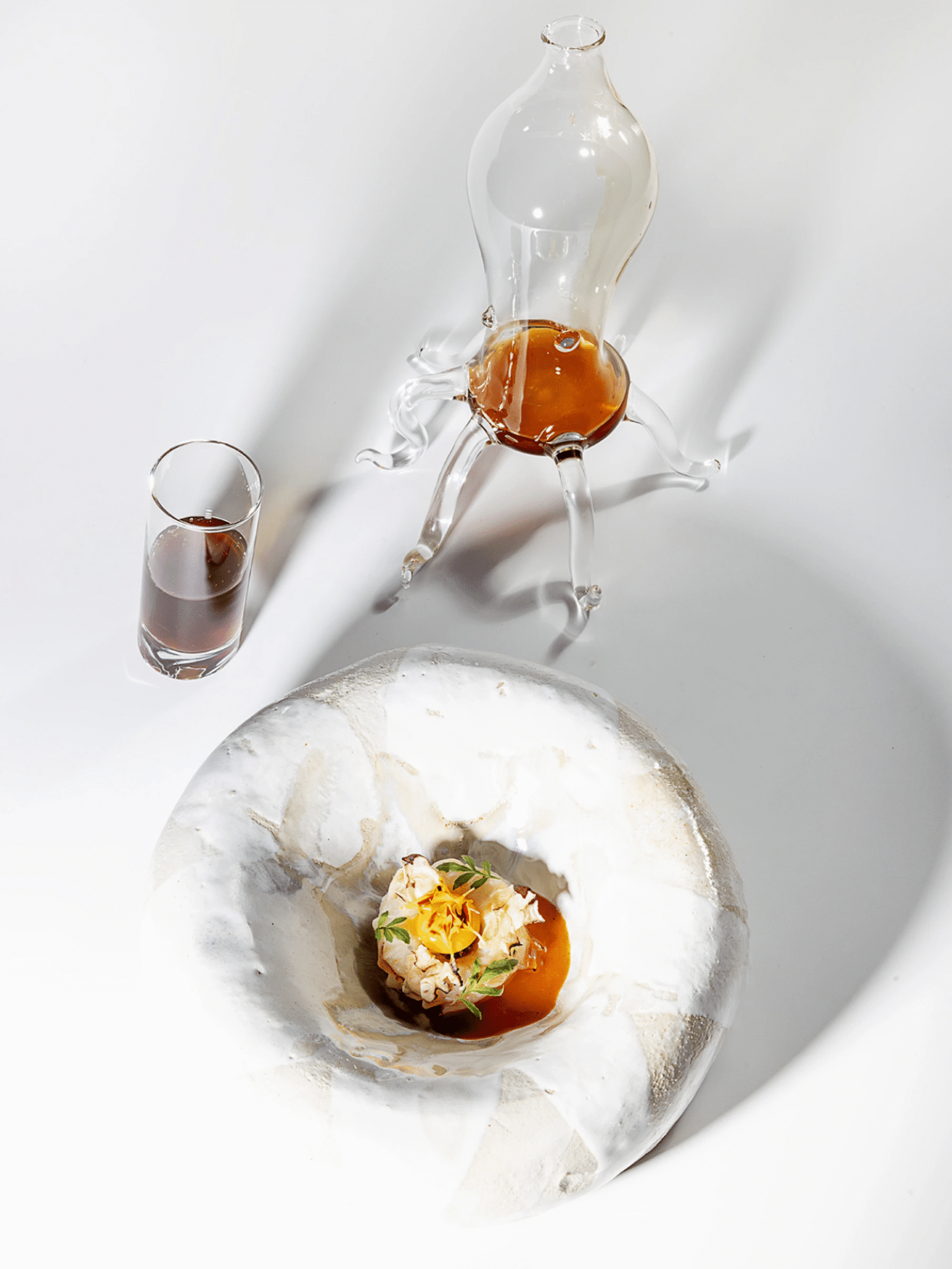


Leave a Reply